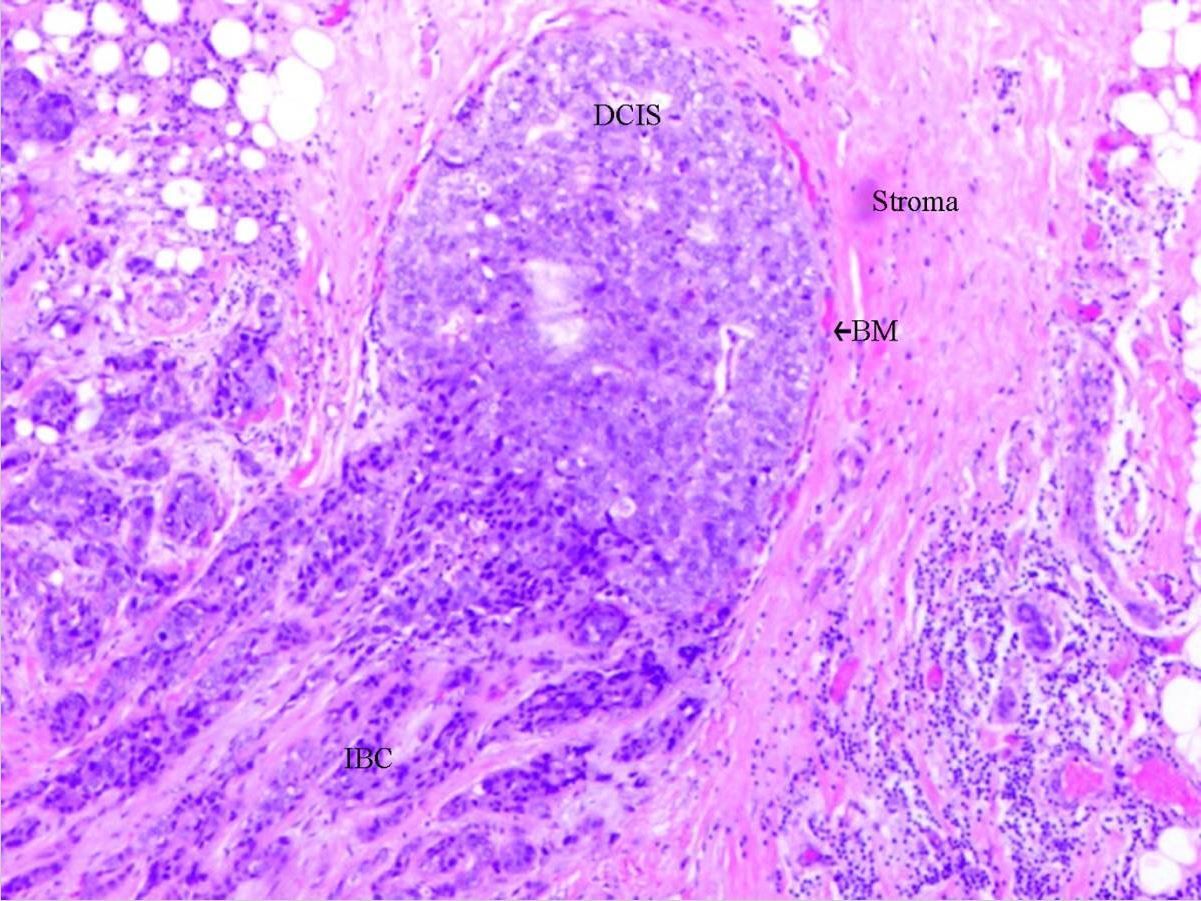Playlist
Show Playlist
Hide Playlist
Morphology of Breast Carcinoma
-
Slides Breast Female Repro.pdf
-
Download Lecture Overview
00:01 Our topic now brings us to breast cancer. 00:04 A couple of things that we want to make sure that we go through with malignant breast cancer is, well, who is your patient and what are some risk factors. 00:14 A lot of this we’ve kind of already talked about with our molecular pathology. 00:18 Let’s put everything together here. 00:20 Commonly, you’ll find this postmenopausal, not always. 00:24 Arises from the mammary duct epithelium and, later on, when we get into clinical anatomy, I’ll show you the glands that are affected. 00:33 Breast cancer can be diagnosed either pre-or postmenopausally and the risk increases with age. 00:38 The most common histologic subtypes are infiltrating ductal carcinoma and invasive lobular carcinoma. 00:44 Other less common types are mucinous, tubular, medullary, papillary, angiosarcoma, and others. 00:51 Tissue from biopsy specimens are tested for hormone receptors known as estrogen and progesterone receptors, or ER and PR, and are reported as positive or negative. 01:01 All specimens are also tested for HER2, an epidermal growth protein, and the results of these tests will help determine the best treatment for a specific patient. 01:09 The most important prognostic indicators is the tumor stage, which includes the size and whether or not there is lymph node involvement or metastatic disease. 01:18 The most common place that you would find tumors in general would be -- what part of the breast? I’ll show you a picture coming up in which majority of percentage of your breast tumors will be located in the upper quadrant. 01:31 Upper outer quadrant. 01:33 What are my risk factors for malignant breast cancer? They include the following: Estrogen exposure, so any female that has exposure to increased estrogen including hormone replacement therapy, including early menarche, late menopause, including the fact that she might be suffering from polycystic ovarian syndrome. 01:56 Increased total number of menstrual cycles, that would then mean what? Increased exposure to estrogen. 02:02 Use your physiology to understand why increased number of menstrual cycles could increase the risk. 02:09 Live birth and obesity. 02:11 Obesity once again, the more obese a female is, the more adipocyte, and the name of the enzyme there is called? Aromatization. 02:20 Therefore, once again, increased estrogen. 02:23 Eventually, the risk factor that you want to keep in mind is obesity associated with increased estrgen exposure.
About the Lecture
The lecture Morphology of Breast Carcinoma by Carlo Raj, MD is from the course Reproductive Pathology: Breast Disease with Carlo Raj.
Included Quiz Questions
What is the most common location of breast carcinoma?
- Upper outer quadrant
- Upper inner quadrant
- Lower outer quadrant
- Lower inner quadrant
- Subareolar
What is the most significant prognostic indicator for breast cancer?
- Positive axillary lymph nodes
- Estrogen receptor positive
- Progesterone receptor positive
- HER2 testing positive
- Age of diagnosis
Customer reviews
2,0 of 5 stars
| 5 Stars |
|
0 |
| 4 Stars |
|
0 |
| 3 Stars |
|
0 |
| 2 Stars |
|
1 |
| 1 Star |
|
0 |
don't" like it deficient im sorry Dr. Raj but this is my opinion





